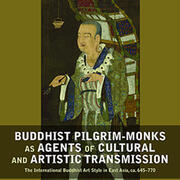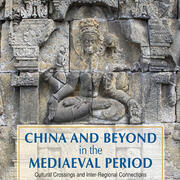Wong DC. Jianzhen (Ganjin) essay in Brill’s Encyclopedia of Buddhism. Brill; 2019.
Publications
2019
Wong DC. Colossal Buddha Statues along the Silk Road. Acta Via Serica. 2019.
2018
Wong D, Peiran J. "Zuowei shishenjizhe Wenshu pusa ji qi tuxiang kaoshi: Zhongguo yu Yindu de zaoqi pusa tuxiang" 作為使神跡者文殊菩薩及其圖像考釋 中國與印度的早期菩薩圖像 (Iconography of the Wonder-Working Mañjuśrī: Early Represent. Wutaishan xinyang duo wenhua, kua zongjiao di xingke yiji guoji xing yingxiang li: Di er cii wutaishan yantaohui lunwenji 五臺山信仰多文化、跨宗教的性格以及國際性影響力:第二次五臺山研討會論文集 (Wutaishan cult, its multi-cultural, cross-Religious characteristics and international impact. 2018:530–50.
Wong D. Buddhist Pilgrim-Monks as Agents of Cultural and Artistic Transmission: The International Buddhist Art Style in East Asia, ca. 645 - 770. Singapore: National University of Singapore Press; 2018.
A common style in East Asian Buddhist art emerged in China, Japan and Korea in the middle of the seventh century and prevailed for about a hundred years. What took shape from the exchange of ideas, practices, and art forms between China and the surrounding regions was a synthetic art style uniform in iconography and formal characteristics. In this richly illustrated study, Dorothy C. Wong argues that notions of Buddhist kingship and a theory of the Buddhist state were in the ascendant across East Asia during this period, and that these religio-political ideals found visual expression in the new art style. Wong asserts that Buddhist pilgrim-monks (traveling between the courts and religious centers) were among the key agents in the transmission of these ideals, and her work assesses their role in the spread, circulation, adoption and transformation of the visual language of state Buddhism, and of the attendant rituals and practices. Transcending cultural and geographical boundaries, this cosmopolitan visual style of Buddhism helped shape the cultural landscape of Northeast Asia.
2016
王靜芬 DW, 張善慶 ZS. "You Dongya Xuanzang huaxiang shenshi sheng seng shenhua lichen" (Chinese translation of The Making of a Saint: Images of Xuanzang in East Asia). Dunhuang yanjiu . 2016;2:17–35.
2015
Wong D. "Bukong juansuo Guanyin xintan" (New Research on AmoghapÄÅa) Chen C-H, editor. 2015.
Wong D. "Chudiyin zhuangshifoxiang zai Zhongguo de xingcheng yu chuanbo" (The Formation and Spread of the Bejewelled Buddha in Earth-touching Gesture Images in China). Yucheng G, Zhao J, editors. 2015.
2014
Wong D, Heldt G. China and Beyond in the Mediaeval Period: Cultural Crossings and Inter-regional Connections. Singapore; Amherst, NY; New Delhi: Institute of Southeast Asian Studies; Cambria Press; Manohar Publishers; 2014.
This volume examines China’s contacts with neighboring cultures in Central, South, Southeast, and Northeast Asia, as well as contacts among those cultures from the beginning of the Common Era to the tenth century and beyond. During this period, transregional and crosscultural exchanges were fostered by both peaceful and aggressive activities and movements of peoples across Eurasia along land and maritime routes. Such movements played an important role in world history in the medieval period, and yet many aspects of cultural exchanges across Eurasia remain understudied. The lack of knowledge is particularly evident in treatments of Chinese history between the Han and Tang empires. Examining relations with neighboring cultures during this period calls into question notions of China as a monolithic cultural entity.


